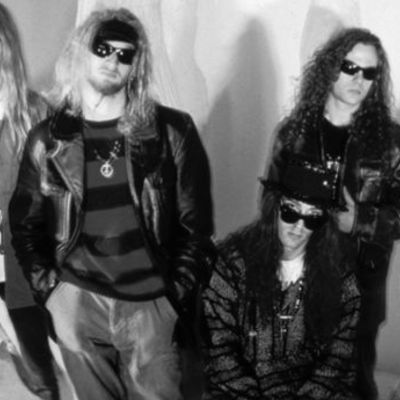Living in the Present with John Prine
A profile.
A profile.
Tom Piazza Oxford American Oct 2018 30min Permalink
As labels big and small attempt to gain traction in the world’s largest market, they’re learning that selling pop is never simple in the epicenter of piracy.
Ed Peto The Register Nov 2007 10min Permalink
Being off the grid suits Kurt Vile just fine. Sitting on the wraparound porch in jeans and a green T-shirt he got at the Ramones Museum in Berlin, unruly curls falling well below his shoulders, the 38-year-old Philadelphia singer-guitarist squirts several drops of a tincture labeled “Calm Mind” into a plastic water bottle and gives it a thorough swish. “Ayurvedic herbs,” he explains after gulping down his concoction. “It’s like nature’s Xanax.” He doesn’t sound entirely convinced.
Simon Vozick-Levinson Rolling Stone Oct 2018 10min Permalink

A profile of a “49-year-old man whose father has just yelled at him,” Frank Sinatra Jr., a son living under the longest shadow.
A profile.
Laura Snapes The Guardian Sep 2018 25min Permalink
On the relationship between rivalry and creativity.
Hua Hsu Lapham's Quarterly Sep 2018 15min Permalink
An in-depth history of the most important pop innovation of the last 20 years, from Cher’s “Believe” to Kanye West to Migos.
Simon Reynolds Pitchfork Jul 2018 40min Permalink
Skinny, sober, happily married, and seemingly full of radiant light, Gucci's become an improbably inspiring public figure, a beacon of serenity and gratitude for positivity-starved times.
Alex Pappademas GQ Sep 2018 10min Permalink
“It is not so difficult to get Paul McCartney to talk about the past, and this can be a problem. Anyone who has read more than a few interviews with him knows that he has a series of anecdotes, mostly Beatles-related, primed and ready to roll out in situations like these. Pretty good stories, some of them, too. But my goal is to guide McCartney to some less manicured memories—in part because I hope they'll be fascinating in themselves, but also because I hope that if I can lure him off the most well-beaten tracks, that might prod him to genuinely think about, and reflect upon, his life.
And so that is how—and why—we spend most of the next hour talking about killing frogs, taking acid, and the pros and cons of drilling holes in one's skull.”
Chris Heath GQ Sep 2018 1h Permalink
A profile of rapper Mac Miller published on September 6, the day before he died.
Craig Jenkins Vulture Sep 2018 15min Permalink

A year-by-year walk through of the decade that birthed a mainstream culture called ‘Alternative’ and the bands that were deified and destroyed by it.
Steven Hyden AV Club Oct 2010 2h15min Permalink
A profile of Aretha Franklin.
David Remnick New Yorker Apr 2016 25min Permalink
“Success for us will be determined by our ability to move faster than everyone else in this space.”
Robert Safian Fast Company Aug 2018 25min Permalink
The story of pianist Bill Evans and his lifelong obsession with a single song.
Steve Silberman The Believer Aug 2018 25min Permalink
Remembering Amy Winehouse.
Leslie Jamison Tin House Jul 2018 20min Permalink
A strange and bittersweet ballad of kidnapping, stolen identity and unlikely stardom.
Jeff Maysh Smithsonian Magazine Jul 2018 20min Permalink
The singer is more uncompromising than ever.
Anne Helen Petersen Buzzfeed Jun 2018 20min Permalink
When the music of Vivaldi and Mozart are used to repel the homeless from sidewalks and Burger Kings, does it still glorify the dignity of humanity?
Theodore Gioia LA Review of Books May 2018 10min Permalink
His rise to the top of the Billboard charts coincides with a list of criminal charges, including domestic battery by strangulation, false imprisonment, and aggravated battery of a pregnant woman.
Tarpley Hitt Miami New Times Jun 2018 25min Permalink
Introduced to the world as an inescapable meme, Danielle Bregoli was only supposed to have 15 minutes of fame. But reborn as Bhad Bhabie, the 15-year-old rapper is letting the world know that she’s got more time on the clock.
Meaghan Garvey Complex May 2018 15min Permalink
A profile of the Talking Heads frontman.
Alex Pappademas GQ Apr 2018 20min Permalink
The wondrous—and occasionally weird—relationship between the children’s-music superstar, his fans, and the man he used to be.
Sheila Heti New York Dec 2015 25min Permalink
What Kanye West really wants.
Ta-Nehisi Coates The Atlantic May 2018 20min Permalink
Twenty-five years after her career-making album, Liz Phair is still writing songs first and foremost for herself.
Emily Gould The Cut Apr 2018 10min Permalink
A profile of the pop star.
Jenna Wortham New York Times Magazine Apr 2018 25min Permalink